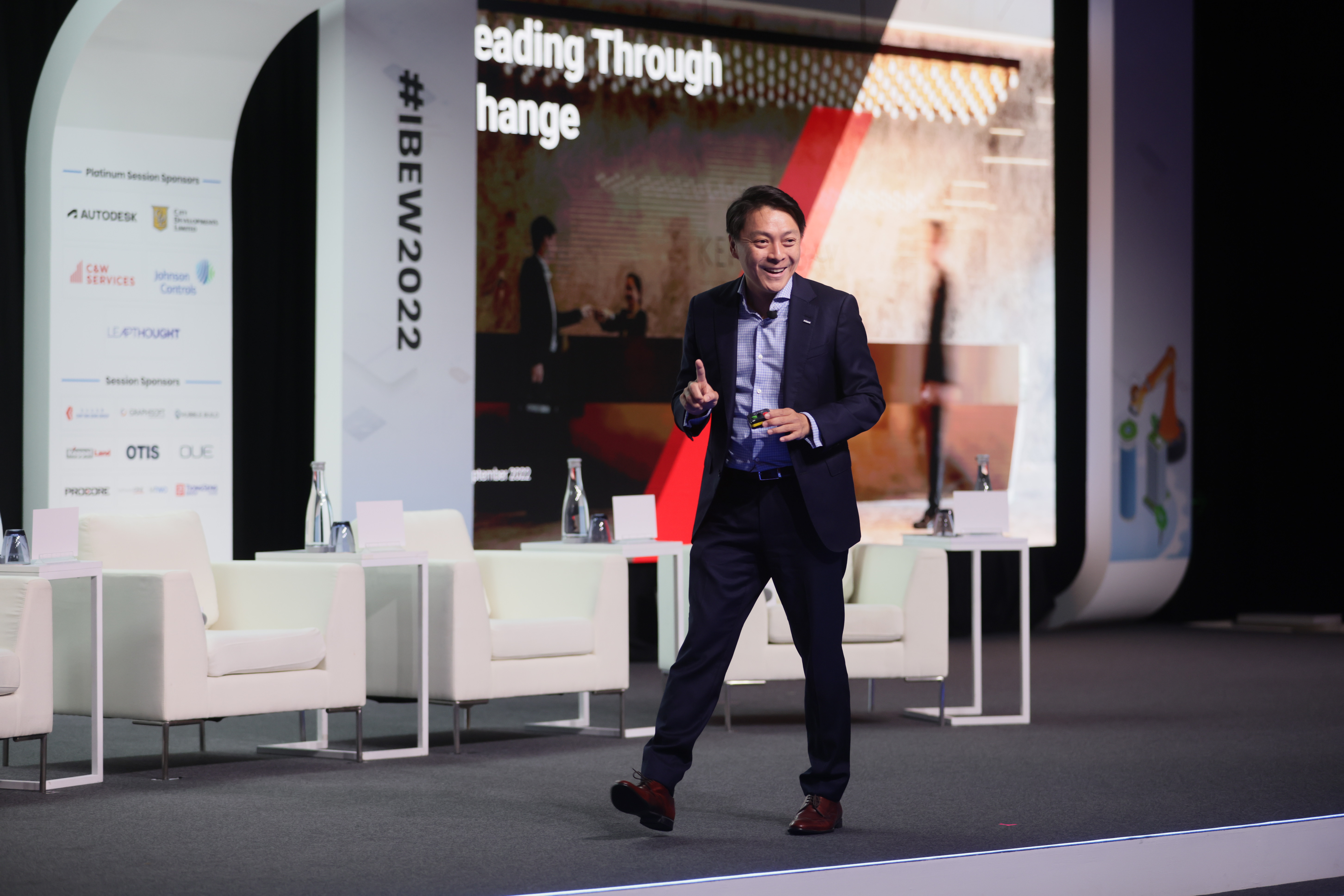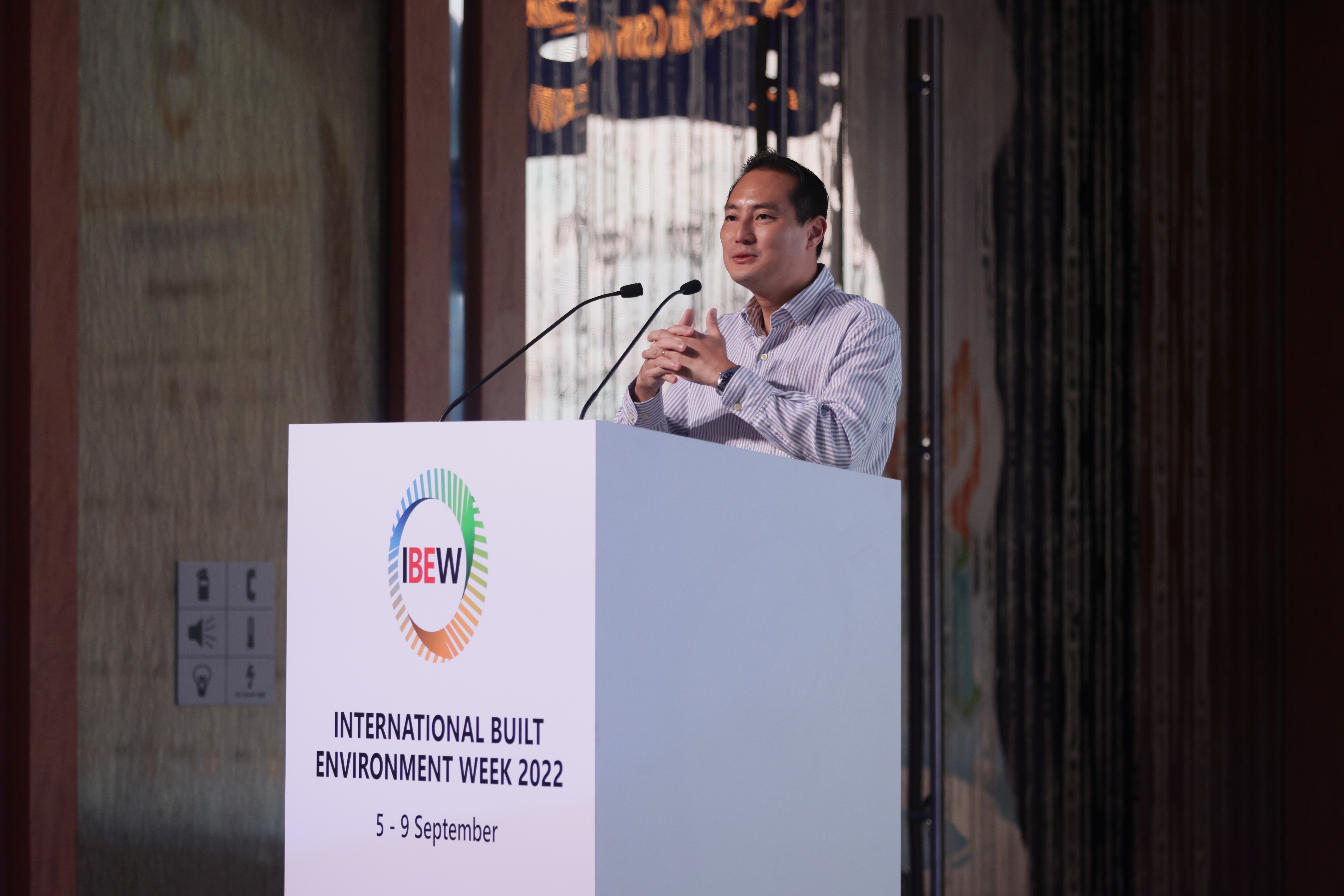Singapore’s Built Environment (BE) sector is finally recovering from the COVID-19 pandemic, but it now has to deal with new challenges from emerging crises.
Geopolitical events such as escalating US-China tensions and the conflict in Ukraine have further fractured global supply chains and escalated the prices of raw materials. As the climate situation rapidly worsens, the industry is under increasing pressure to pivot quicker towards more sustainable measures.
“It’s been a season of volatility and challenges, and it doesn’t look like it’s going to be solved anytime soon” observed Mr Kelvin Wong, Chief Executive Officer at the Building and Construction Authority (BCA). “The next mile is just going to be as uncertain as the last two to three years.”
Mr Wong was speaking at a panel discussion on the third and final day of the International Built Environment Week (IBEW) 2022. Moderated by Mr Mukund Sridhar, Senior Partner at management consulting firm McKinsey & Company, the session saw corporate leaders in the BE sector sharing insights on how the industry can adapt to the next chapter of challenges.
They noted that three key areas need to be addressed: resilience, people, and change. “How can we really ride through this together as a team, align long-term goals and work on the things that will help us last?” said Mr Wong.
|
|
 Louis Lim, Chief Executive Officer of Keppel Land Louis Lim, Chief Executive Officer of Keppel Land
|
|
Resilience: Lessons from COVID
First, industry players must continue honing the resilience forged from COVID-19 – which had severely battered the BE sector – and apply them to new challenges ahead.
“We need to coach people on the need for resilience because it feels that change is the only true constant in today’s world,” said Keppel Land’s Chief Executive Officer Louis Lim.
Mr Lee Aik Seng, Managing Director at construction firm Obayashi Singapore, had observed that one of the biggest challenges currently confronting construction companies in the post-COVID world was supply-chain management.
“We’re facing a lot of issues with delays and price escalation,” he said. “Not just in equipment and material, but in terms of skilled workers as well. We need to think how we can continue to sustain them.”
To combat fluctuating prices and shortages, one way that the industry can build resilience is by being agile. For instance, instead of the traditional way of working in silos, a collaborative contracting approach enables industry players – from engineers to contractors – to be more flexible when projects face challenges and handle disputes more amicably and smoothly.
“This is part of futureproofing: the ones among us who can collaborate better will be in a stronger position,” noted Mr Wong.
People: New talents, different expectations
The second way that the BE sector can prepare for the future is by finding ways to attract and retain talent – a perennial issue that the industry faces.
A solution is to meet the evolving expectations of BE professionals. Rather than sticking to their own specialisations, many engineers are now looking for multi-disciplinary roles, noted Er Jee Yi Yng, Country Representative at construction engineering firm AECOM Singapore. Environment consultants, for example, want to branch into infrastructure projects.
“These are the opportunities that we need to give to them, and that’s where they’ll thrive,” she said. “As leaders, we need to enable them.”
|
|
 Senior Minister of State for National Development Tan Kiat How Senior Minister of State for National Development Tan Kiat How
|
|
In his opening remarks, Senior Minister of State for National Development Tan Kiat How also noted that BE professionals and leaders wanted their skills and contributions to be better valued. In addition, these industry players hoped for the BE workforce to be more productive, digitally savvy and knowledgeable about sustainability.
Achieving these aims start from the top. “As CEOs, you play a crucial role in driving transformation by setting the direction and culture within your organisations as well as by guiding and nurturing your employees – one of your most valuable assets in your company – towards transformation goals,” he said. “It is the people who must act on our ambitions to transform the sector.”
Change: The only constant
Lastly, to keep up with new trends such as sustainability and digitalisation, companies in the BE sector have to learn how to adapt accordingly.
In his keynote speech preceding the panel discussion, Keppel Land’s Mr Lim shared how his organisation evolved from being a traditional real estate developer to an urban space solutions provider in 2020.
A new key focus is on sustainable urban renewal. Keppel Land installs smart and sustainable features in older buildings that help to reduce long-term costs as well as saves the environment.
While enacting change may not be easy, Mr Lim said it is something that needs to be done. Clear communication, being decisive, and expecting the unexpected are some of the tools for success on this front.
Most importantly, companies have to stay the course. “These things take time. There will be both positive and negative moments,” he said. “The key is to survive through these moments to effect positive change.”